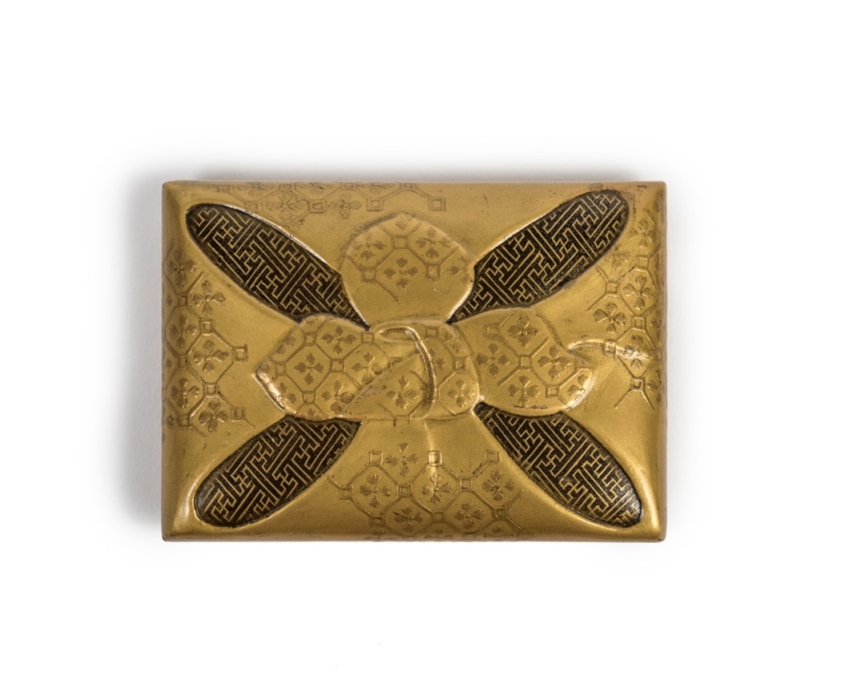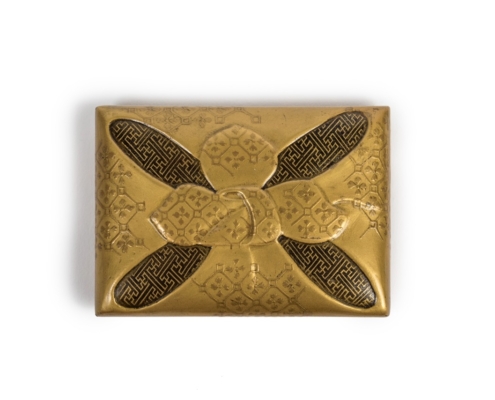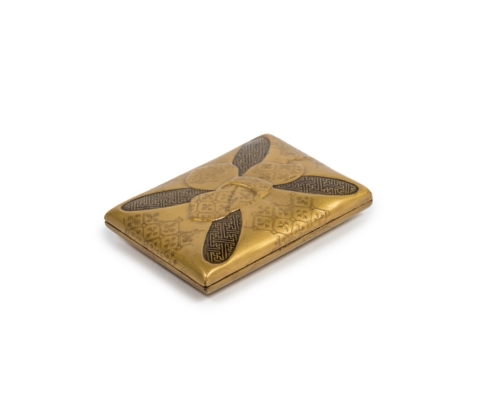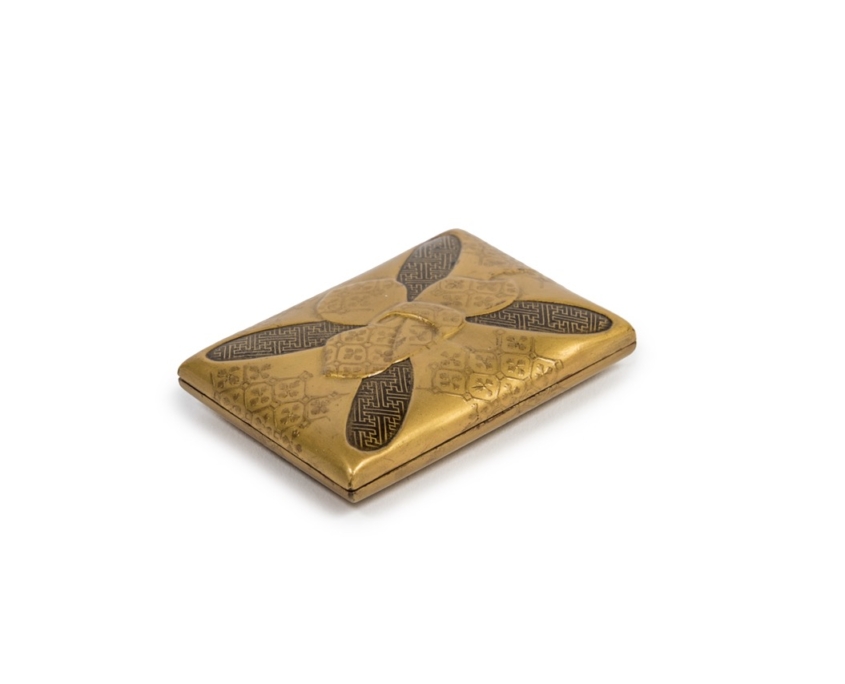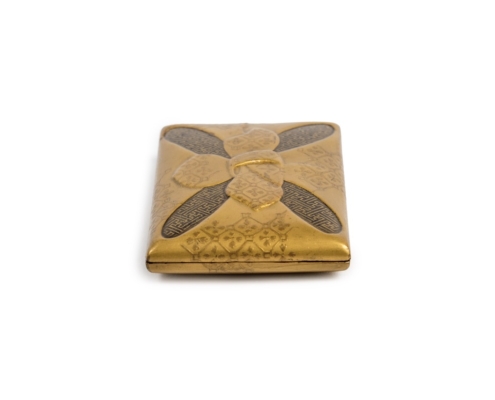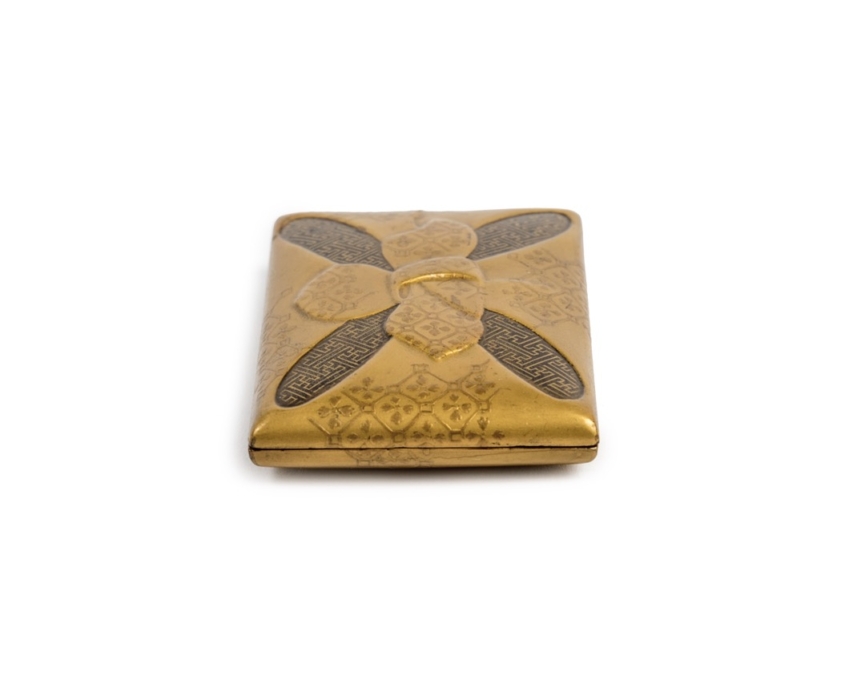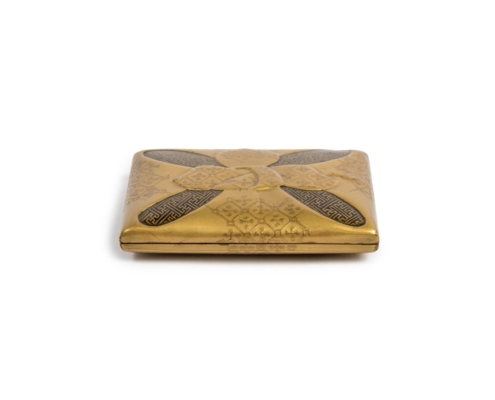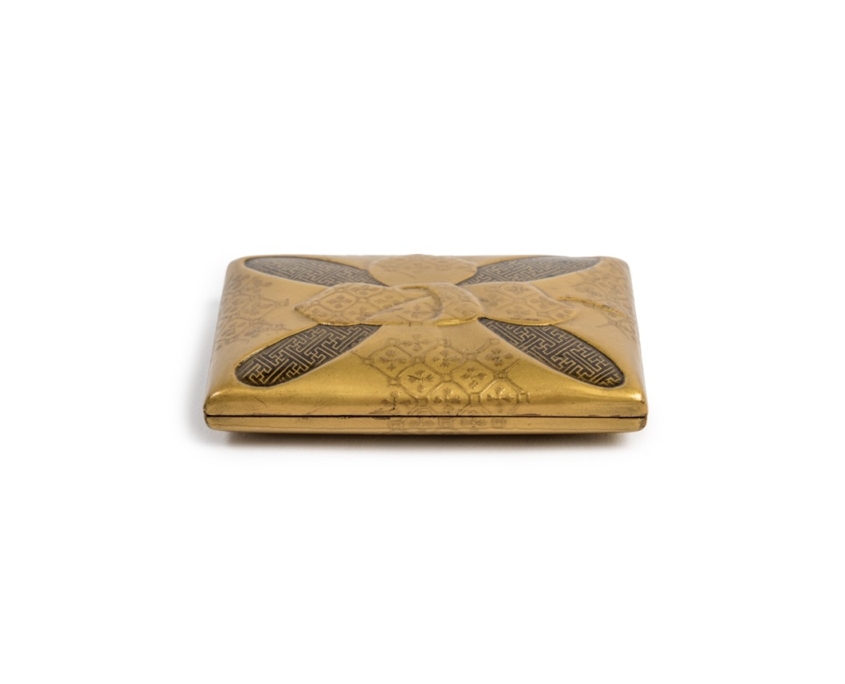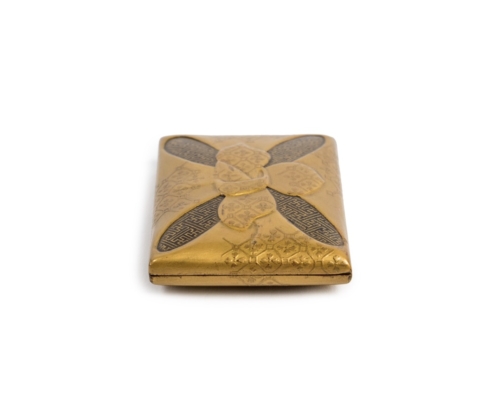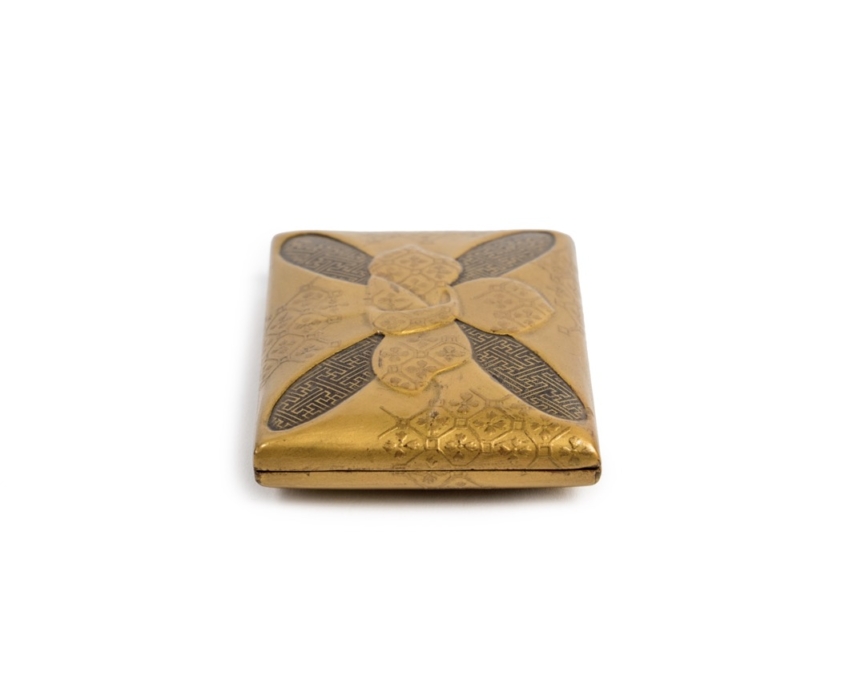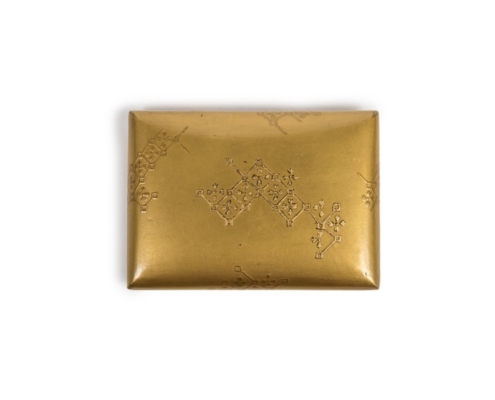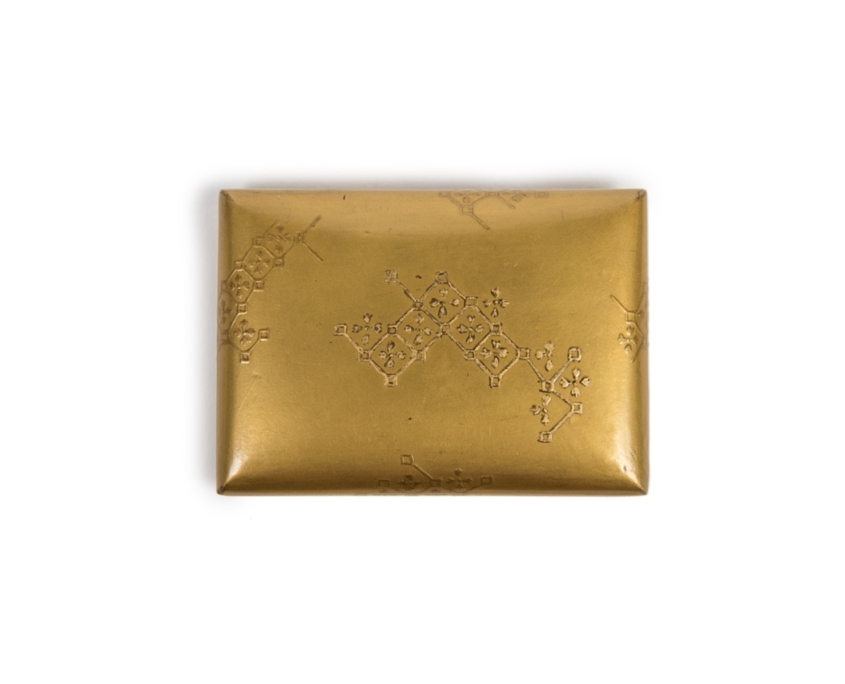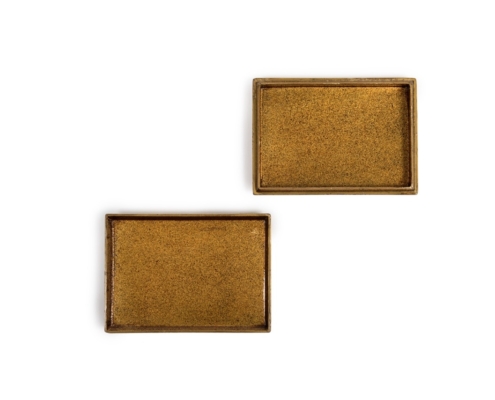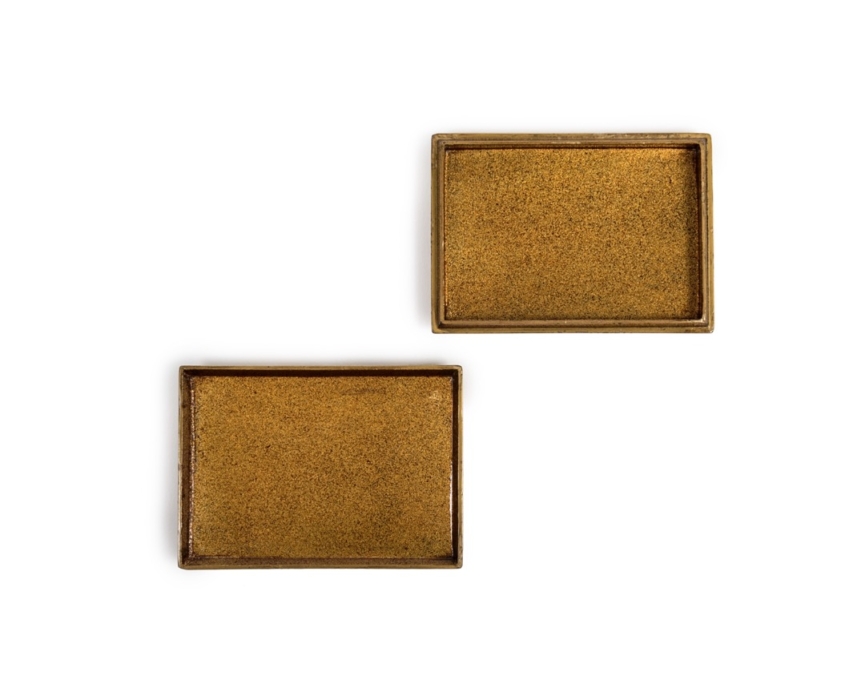FUROSHIKI KOBAKO BOX – EDO
Reference: 2021-895
Rectangular and flat lacquer Kobako (small box) representing a furoshiki knot seen from above. Fundame background, furoshiki in takamaki-e with floral pattern, inside the folds of the fabric with black and gold sayagata pattern withtogidashi maki-e technique. The saya (or sayagata) pattern is composed of Chinese swastikas. This symbol, linked to Buddhism, represents qualities of intelligence, strength and peace. It is a sign of good omen. Interior in nashi-ji lacquer.
Japan – Edo period (1603-1868)
Length 2.8 in (7 cm) – Width 2 in (5 cm) – Height 0.6 in (1.5 cm)




